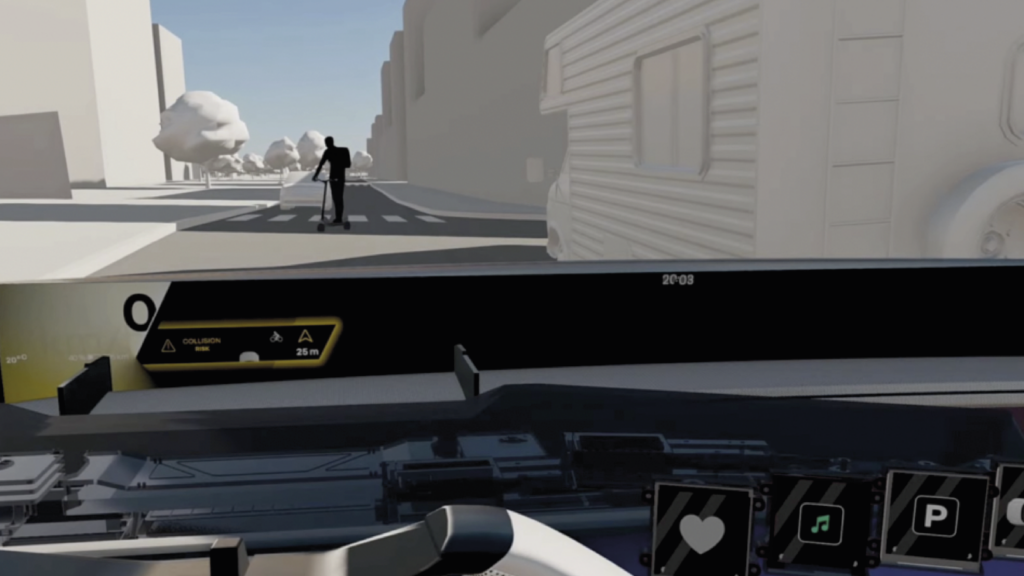Benefits and applications of a virtual twin
The automotive prototyping industry is in a constant state of evolution, driven by the relentless pursuit of innovation and the quest for more efficient methods of vehicle design and development. In this dynamic landscape, two emerging concepts have captured the attention of engineers and designers alike: the Virtual Twin and the Physical Twin. These distinctive approaches offer unique perspectives on the prototyping process, each bringing its own set of advantages to the table.
What are Virtual and Physical Twins?
The Virtual Twin concept revolves around the creation of comprehensive virtual models for vehicles under development. These digital replicas encompass every conceivable component, system, and even interactions with the environment. Harnessing the power of advanced simulation software, engineers can meticulously analyze vehicle behavior in a wide range of conditions, predict performance outcomes, and refine designs. Virtual models facilitate swift iterations and precise adjustments, significantly curtailing the time required for the design process.
In contrast, the Physical Twin places emphasis on crafting tangible, physical prototypes that faithfully replicate the envisioned vehicle. These prototypes serve as tangible proof of concept and can undergo real-world testing to assess performance under actual conditions. Particularly critical for validating ideas and ensuring adherence to regulatory standards, physical prototypes, despite their potential for higher time and cost investment, bring a palpable dimension necessary for guaranteeing vehicle quality and safety.
In the intricate realm of automotive prototyping, designers and engineers find themselves navigating the delicate balance between these two complementary approaches, seeking the optimal fusion of efficiency, cost-effectiveness, and end-product quality.
What are the advantages of virtual twin?
The virtual twin offers three advantages: it reduces development costs, speeds up the design process and optimizes remote collaboration. Let’s take a closer look.
Firstly, the use of Virtual Twin minimizes the expenses associated with initial physical prototyping. By investing in cutting-edge simulation software, companies can make substantial savings by sidestepping costly prototyping in the early stages of the design process. This approach allows for more effective allocation of budgetary resources for subsequent iterations of the design.
Secondly, virtual models enable swift adjustments and continuous iterations without the need to reconstruct physical prototypes with each modification. Engineers can explore diverse configurations, test innovative concepts, and refine designs in real-time, expediting the overall design and development process.
In an increasingly globalized context, the Virtual Twin serves as a facilitator for collaboration among geographically dispersed teams. Professionals can seamlessly share and collaborate on virtual models, fostering transparent communication and efficient cooperation without the logistical constraints associated with tangible prototypes.
What are the advantages of a physical twin?
Shifting our focus to the advantages of the Physical Twin, we encounter three pivotal aspects: tangible proof of concept, real-world performance testing, and meeting regulatory requirements.
Physical prototypes provide tangible validation of design ideas and concepts. There is simply no substitute for the tactile experience of a physical model when assessing a vehicle’s form, function, and ergonomics. This hands-on approach enables designers and engineers to identify potential faults or necessary improvements that might elude detection in a virtual environment.
Furthermore, physical prototypes facilitate real-world performance testing under conditions that closely mirror reality. Track tests, crash simulations, and other physical evaluations yield crucial information on safety, durability, and overall vehicle performance. This data is indispensable for ensuring compliance with industry standards and regulatory requirements.
Regulatory bodies often mandate physical testing to guarantee vehicle safety. Physical prototypes play a pivotal role in meeting these requirements by providing tangible data on crashworthiness, stability, and other essential criteria. This not only ensures regulatory compliance but also contributes to the successful market entry of vehicles.
As technology advances, it is likely that the automotive prototyping industry will explore innovative ways to merge the virtual and the physical, maximizing the benefits of each approach. The future of automotive prototyping may well be defined by a harmonious integration of these concepts, offering novel opportunities while steadfastly upholding safety and quality standards.
In summary, the multitude of benefits offered by both physical and virtual prototyping greatly contribute to the enhancement of the user experience. This user experience stands as a paramount consideration, necessitating meticulous attention throughout the entirety of the development process to ensure refinement and alignment with the needs of all stakeholders upon project completion. At Epicnpoc, prioritizing this user experience is our foremost objective, enabling it to be swiftly shared and tested.If you are interested in our approach or would like to find out more, we invite you to contact us. We eagerly anticipate the opportunity to engage in discourse regarding your project.
About Epicnpoc
Create your smart product experiences better and faster with the tools you need to quickly turn your concept into an interactive prototype. Work with a team of design and software engineering experts that have supported concept cars and completed over 25 high-profile PoCs with global corporations, government, and educational institutions. If you work on smart products that provide interaction and generate emotions, then jumpstart your future product experience today!
Communication Contact:
contact@epicnpoc.com

